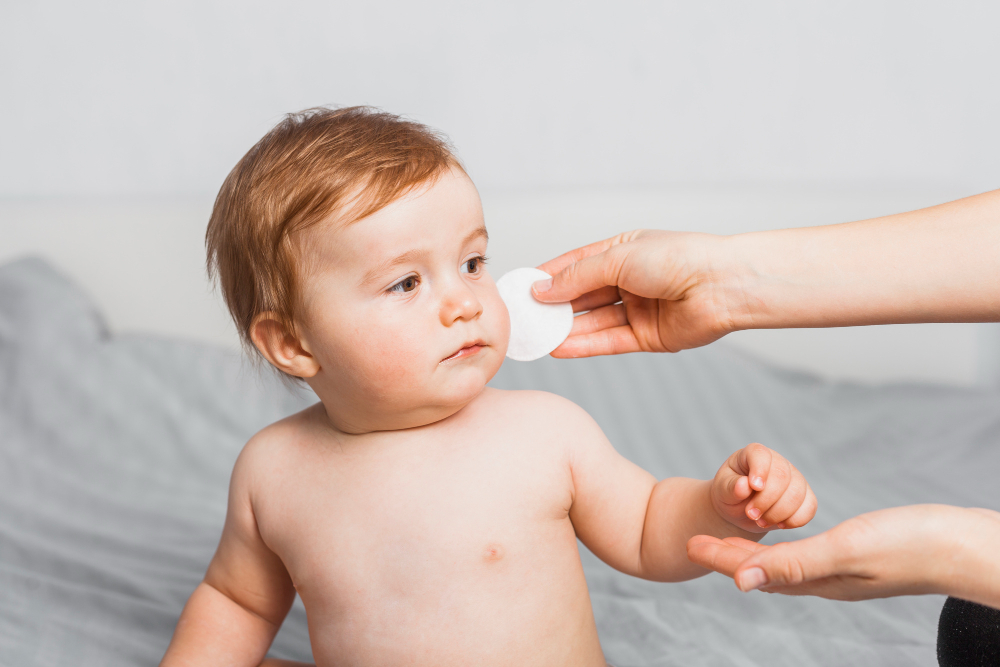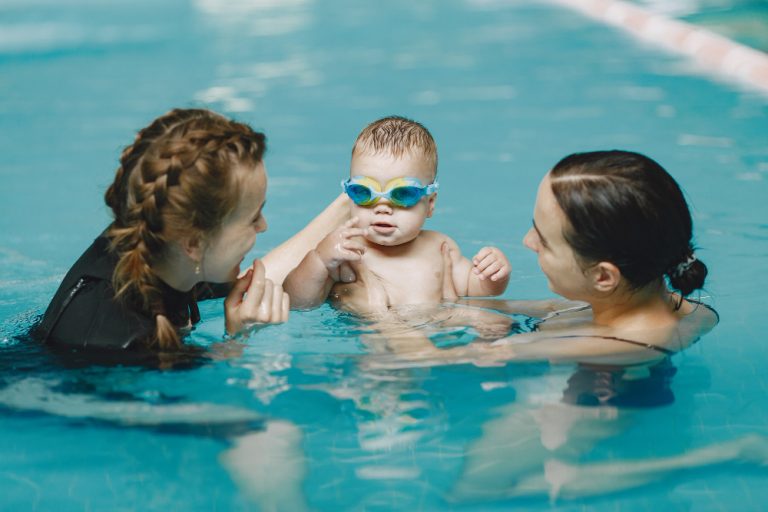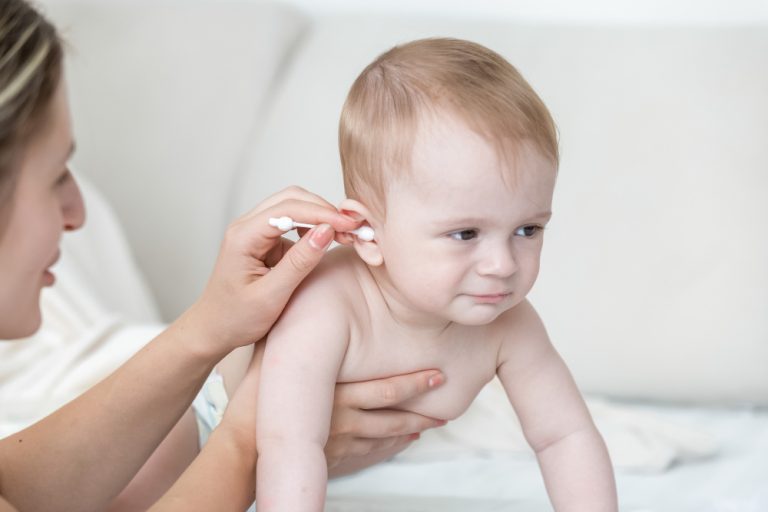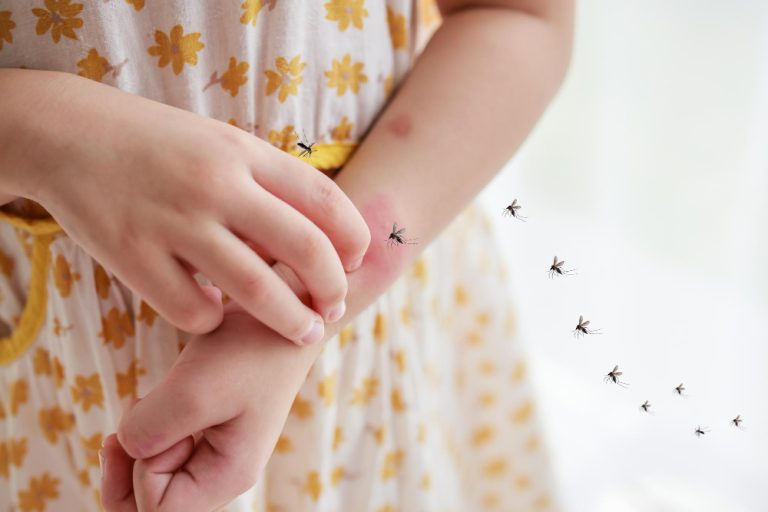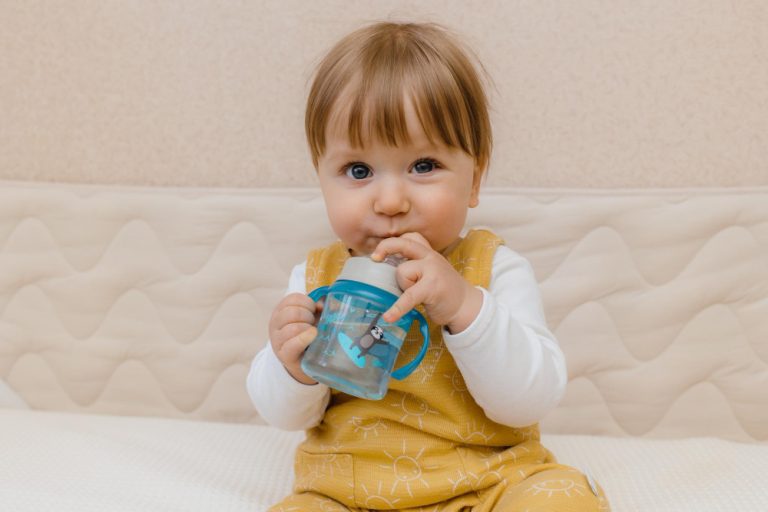How To Treat Heat Rash In Babies? Types, Signs, & Treatment
Are you noticing tiny red bumps on your baby’s delicate skin? Heat rash, also known as prickly heat, can be uncomfortable for your little one, causing irritation and itchiness. As a parent, seeing your baby in discomfort can be distressing. But fret not; there are quick and easy remedies that can provide relief and soothe your baby’s skin.
In this article, we’ll delve into the world of heat rash in babies, exploring its types, symptoms, and effective treatment options. From discussing the most common types of heat rash to providing insights on how to differentiate them, we’ve got you covered.
Discover the wonders of natural remedies and home treatments that can alleviate your baby’s discomfort and help maintain their skin’s health.
Stay tuned for expert tips on how to treat heat rash in babies, ensuring your little one stays comfortable even in the sweltering heat. Ease your worries and arm yourself with the knowledge to tackle heat rash with confidence.
Introduction: How To Treat Heat Rash In Babies
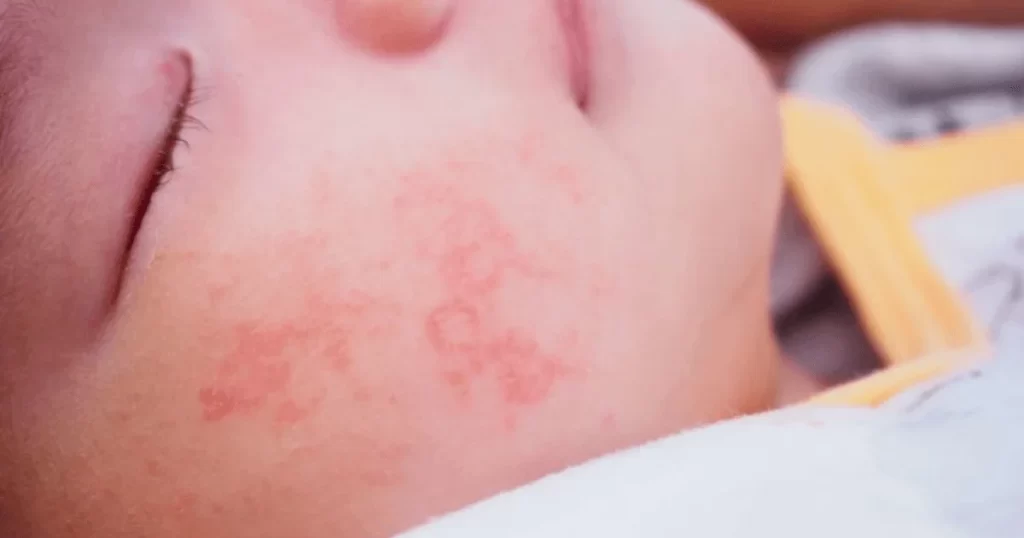
Heat rash, also known as prickly heat, is a common skin condition that can affect babies, especially during hot and humid weather. It occurs when sweat ducts become clogged, preventing perspiration from properly evaporating. As a result, sweat becomes trapped beneath the skin, leading to the development of small, itchy bumps or blisters.
Babies have a higher risk of developing heat rash due to their delicate skin and immature sweat ducts. The most common type of heat rash in babies is known as miliaria rubra, which appears as red bumps on the skin.
However, there are other types, such as miliaria crystallina, characterized by clear, fluid-filled blisters, and miliaria profunda, which presents as deeper, flesh-colored lesions.
Heat rash typically affects areas of the body where sweat is trapped, such as the neck, chest, groin, and diaper area. It can cause discomfort and itchiness for babies, leading to potential sleep disturbances and irritability.
To alleviate heat rash in babies, it is important to understand the causes and implement proper care. Next, we will explore the types of heat rash that can occur in babies and discuss their specific symptoms and treatments.
Types of Heat Rash
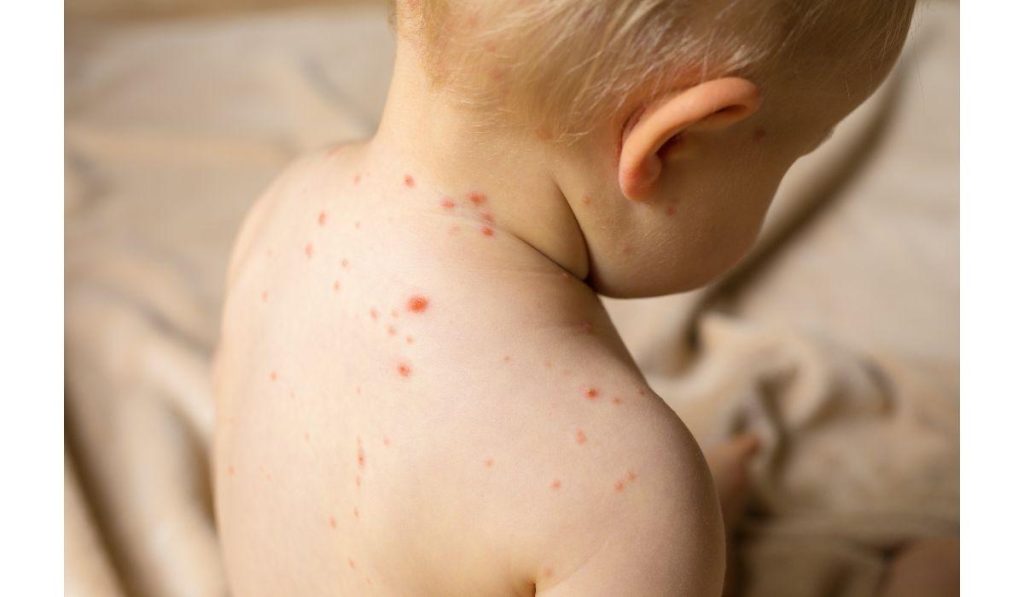
When it comes to heat rash in babies, there are different types that can occur. Understanding these types can help parents identify and manage the condition effectively.
Here are the main types of heat rash in babies:
1. Miliaria Rubra
- Miliaria rubra, also known as prickly heat, is the most common type of heat rash in babies.
- It occurs when sweat glands become clogged, leading to small red bumps on the skin.
- These bumps can be itchy and cause discomfort for your little one.
2. Miliaria Crystallina
- Miliaria crystallina is the least severe form of heat rash.
- It appears as tiny, clear, fluid-filled blisters on the surface of the skin.
- Typically, it does not cause any symptoms other than the presence of the rash itself.
- This type of heat rash tends to resolve on its own without treatment.
3. Miliaria Profunda
- Miliaria profunda is the rarest and most severe type of heat rash.
- It occurs when sweat ducts deeper in the skin become blocked.
- This results in large, flesh-colored bumps that may resemble a heat rash but have no visible signs of sweat.
- Miliaria profunda is more common in older children and adults than in babies.
It’s important to note that in some cases, the different types of heat rash can coexist or progress from one type to another. If you notice any unusual or persistent symptoms, it’s best to consult a healthcare professional for a proper diagnosis and appropriate treatment.
Remember, understanding the types of heat rash can help you identify the condition accurately and take the necessary steps to provide relief for your baby.
Symptoms and Diagnosis of Heat Rash
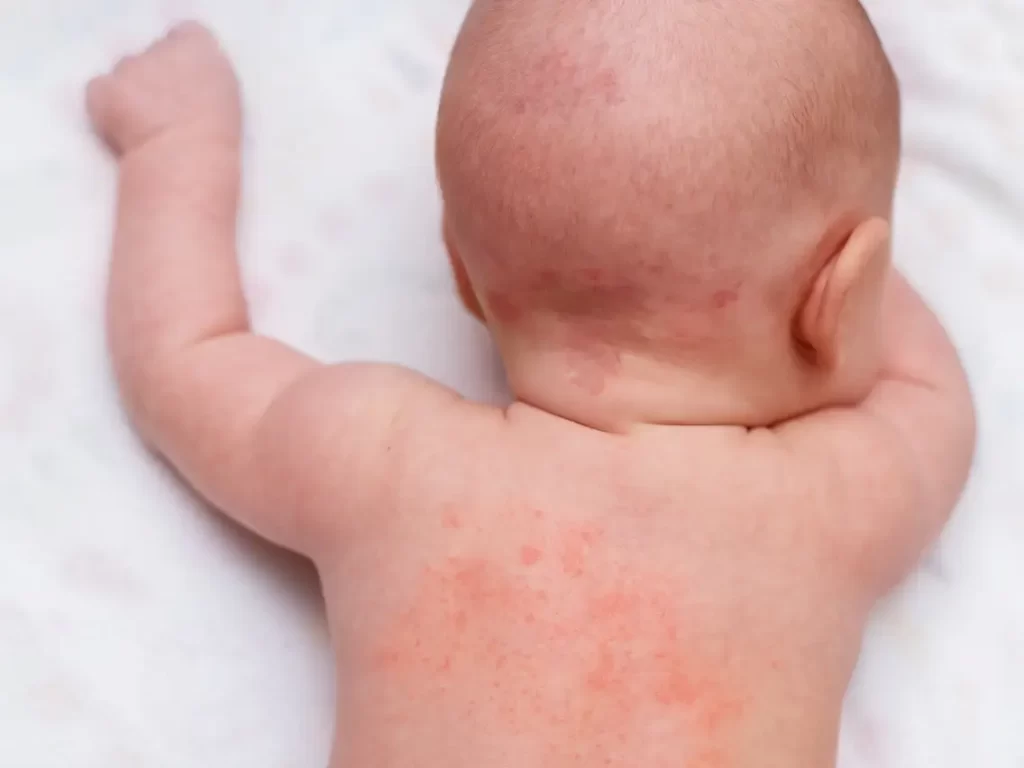
Heat rash, also known as prickly heat, can be a common occurrence in babies, especially during hot and humid weather. Recognizing the symptoms and seeking timely diagnosis is essential for effective management.
Here are the common symptoms of heat rash in babies and how healthcare professionals diagnose the condition:
1. Red bumps or small blisters
- Heat rash typically presents as red bumps or small blisters on the baby’s skin.
- These may appear in areas where sweat is trapped, such as the neck, chest, underarms, and diaper area.
2. Itching or discomfort
- Babies with heat rash may exhibit signs of itchiness or generalized discomfort.
- The affected area may be sensitive and cause mild discomfort to the baby.
3. Skin irritation
- The presence of heat rash may lead to skin irritation, causing the affected area to become reddened and inflamed.
4. Increased sweating
- Babies with heat rash may exhibit increased sweating due to the inability of sweat ducts to function properly.
- This excess sweating can further aggravate the condition.
Healthcare professionals typically rely on a visual examination of the skin to diagnose heat rash in babies. The doctor assesses the rash’s characteristics, such as its appearance, location, and accompanying symptoms. In most cases, laboratory tests or further investigations are not necessary.
If you suspect your baby has heat rash, it’s essential to consult a healthcare professional for an accurate diagnosis and appropriate guidance on management strategies.
Remember, while heat rash is generally benign, severe or persistent cases may require medical attention. Prompt diagnosis and proper management can help alleviate your baby’s discomfort and ensure their well-being during hot weather conditions.
How To Treat Heat Rash In Babies?
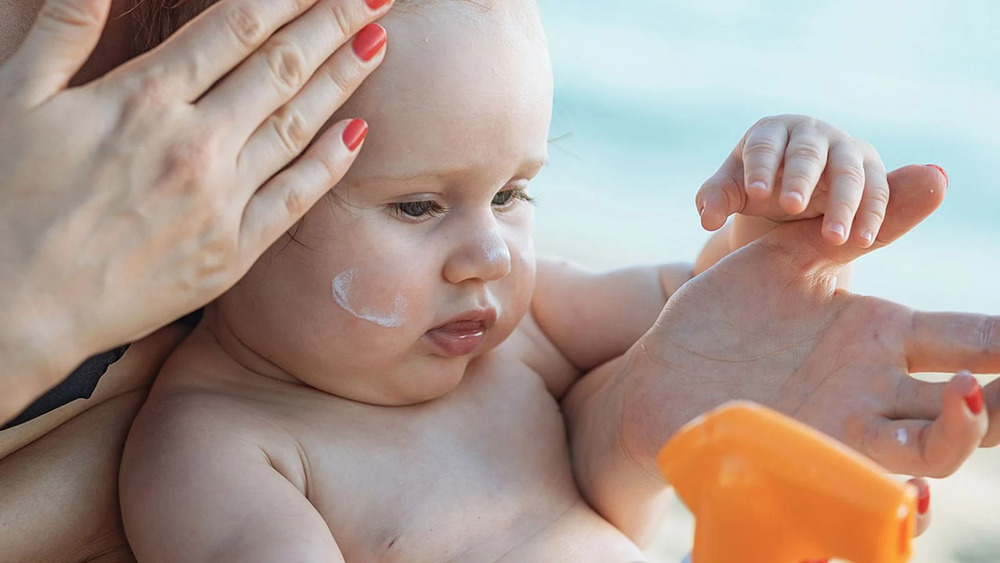
When it comes to treating heat rash in babies, there are various effective treatments and home remedies that can provide relief and help alleviate discomfort.
Here are some recommended options:
Cooling Baths
- Giving your baby a cool bath is one of the most effective ways to soothe their heat rash.
- Fill a tub with lukewarm water and let your baby soak for about 10 to 15 minutes.
- Avoid using cold water as it may shock their delicate skin.
- Gently pat your baby dry with a soft towel afterward.
Applying Water
- Another simple and effective remedy is applying cool water to the affected areas.
- Use a clean cloth or sponge and gently dab the rash with cool water.
- This can help reduce inflammation and provide instant relief.
Steroid Creams
- In more severe cases of heat rash, a doctor may recommend a mild steroid cream to reduce inflammation and itching.
- However, it’s important to consult with a healthcare professional before using any medication on your baby’s skin.
Calamine Lotion or Anhydrous Lanolin
- Calamine lotion can offer soothing relief for heat rash.
- Apply a thin layer of calamine lotion to the affected areas and let it dry.
- An alternative option is anhydrous lanolin, which can also help soothe the rash and prevent further irritation.
It’s important to keep in mind that while these treatments and remedies can provide relief, it’s also crucial to address the underlying cause of heat rash. Take steps to keep your baby cool and comfortable, and avoid exposing them to excessive heat or humidity.
Remember, always consult with a healthcare professional for a proper diagnosis and guidance on the best course of treatment for your baby’s unique condition.
Risk Factors for Heat Rash in Babies
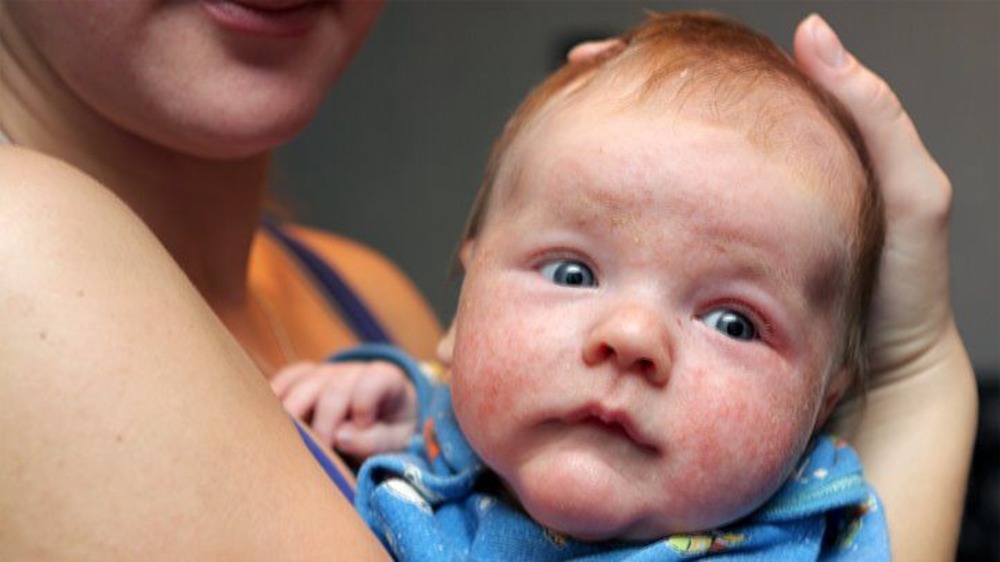
Heat rash in babies can be triggered by various factors, making them more susceptible to this uncomfortable condition. Understanding these risk factors can help parents take proactive measures to prevent heat rash in their little ones.
Hot Weather
- The combination of high temperatures and humidity can contribute to heat rash in babies.
- When exposed to hot weather, their immature sweat ducts may struggle to regulate body temperature effectively, leading to the development of heat rash.
Immature Sweat Ducts
- Babies have underdeveloped sweat ducts, making them more prone to heat rash.
- These tiny ducts can become easily clogged or blocked, trapping sweat beneath the skin and causing irritation.
Overdressing
- Dressing babies in too many layers, especially during warmer weather, can increase the risk of heat rash.
- It’s important to choose lightweight, breathable fabrics and to dress infants in loose-fitting clothing to allow for proper air circulation and heat dissipation.
Overheated Environments
- Exposing babies to excessively warm indoor environments, such as heated rooms or confined spaces without adequate ventilation, can contribute to heat rash.
- Maintaining a cool and well-ventilated space can help prevent the onset of heat rash.
Prolonged Skin-to-Skin Contact
- Extended skin-to-skin contact, particularly in humid conditions, can make it challenging for babies’ skin to expel moisture.
- This prolonged moisture trapped against the skin can exacerbate the development of heat rash.
By being aware of these risk factors, parents can take proactive steps to prevent heat rash in their babies. Ensuring a comfortable environment, dressing babies appropriately for the weather, and maintaining proper hygiene can significantly reduce the chances of heat rash occurrence.
Remember to monitor your baby’s skin and seek medical advice if the symptoms persist or worsen. With proper care and attention, you can protect your little one from the discomfort of heat rash.
Prevention of Heat Rash
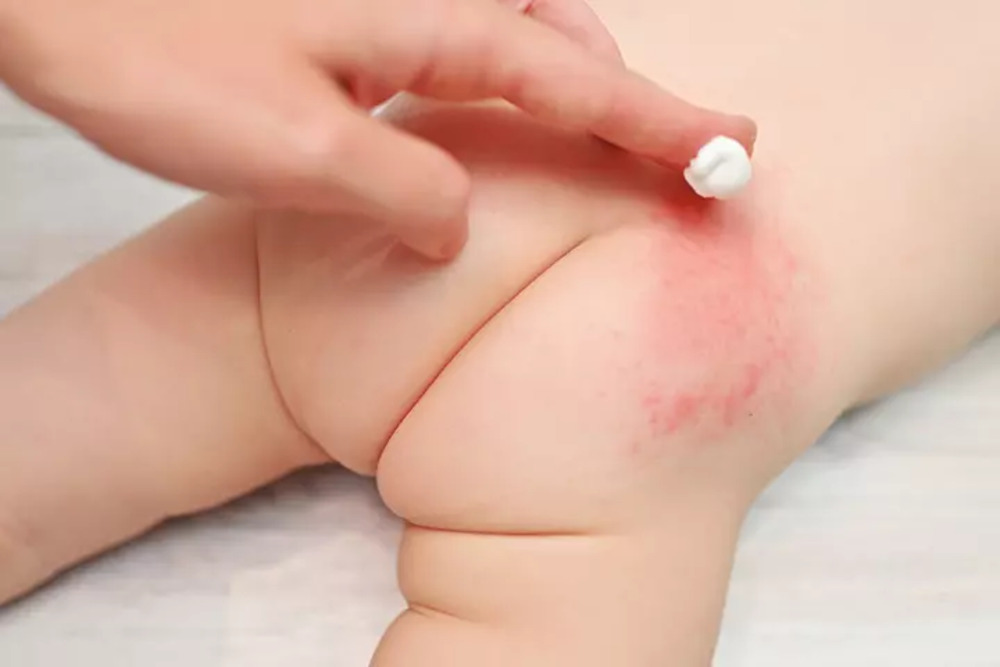
Preventing heat rash in babies is crucial for their comfort and well-being. By implementing a few simple strategies, parents can minimize the risk of heat rash and help their little ones stay cool and comfortable.
Here are some effective tips for preventing heat rash in babies:
Dress Them in Layers
- Dress your baby in lightweight, loose-fitting clothing made from breathable fabrics such as cotton.
- Avoid overdressing them, especially in hot and humid weather.
- Choose clothes that allow air circulation and help wick away moisture from their skin.
Keep Them Hydrated
- Ensure your baby stays hydrated by offering them frequent breast milk or formula if they are under six months old.
- If your baby has started eating solid foods, provide them with additional water or other fluids as appropriate for their age.
- Keeping them well-hydrated helps regulate their body temperature and prevent excessive sweating.
Create a Cool Environment
- Maintain a comfortable temperature in your baby’s room by using fans, air conditioning, or opening windows to allow proper ventilation.
- Use lightweight bedding, and consider using a fan in the room to help circulate air.
- Avoid direct exposure to sunlight during the hottest hours of the day.
Seek Shade
- When outdoors, find shaded areas to protect your baby from direct sunlight.
- Use an umbrella or a stroller with a canopy to provide additional shade.
- Be cautious while using sunscreens on babies under six months old, as their delicate skin may be more sensitive.
Limit Outdoor Activities
- Consider planning outdoor activities in the early morning or late evening when temperatures are cooler.
- Avoid taking your baby out during the peak heat hours, typically between 10 a.m. and 4 p.m.
Remember, prevention is key when it comes to heat rash in babies. By following these tips, you can significantly reduce the chances of your little one developing heat rash and keep their delicate skin cool and comfortable.
How Long Does Heat Rash Last?
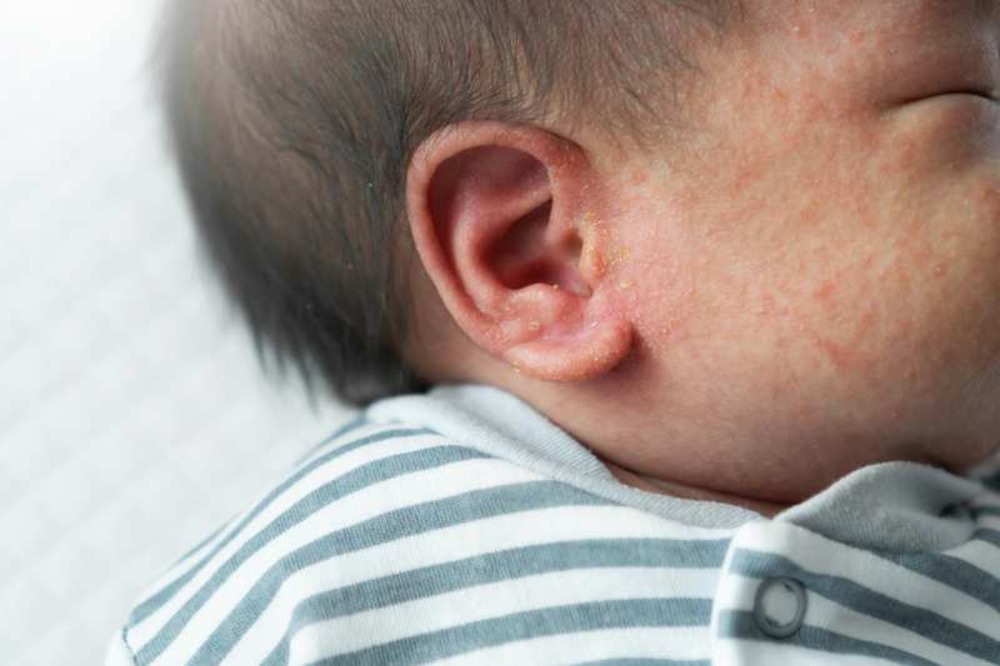
Heat rash in babies is a common occurrence during hot and humid weather. The duration of heat rash can vary depending on the severity and type of rash.
In most cases, mild heat rash tends to resolve within a few days with proper care and remedies. However, more severe forms of heat rash may take longer to heal.
It is important to monitor the rash closely and take necessary steps to provide relief to your baby. If the rash persists or worsens after a few days, it is advisable to seek medical advice.
A healthcare professional can evaluate the severity of the rash and recommend appropriate treatment options. Remember, early intervention can help prevent complications and ensure your baby’s comfort.
Don’t hesitate to reach out to a healthcare professional if you have any concerns or questions about your baby’s heat rash.
Why Do Babies Get Heat Rash?
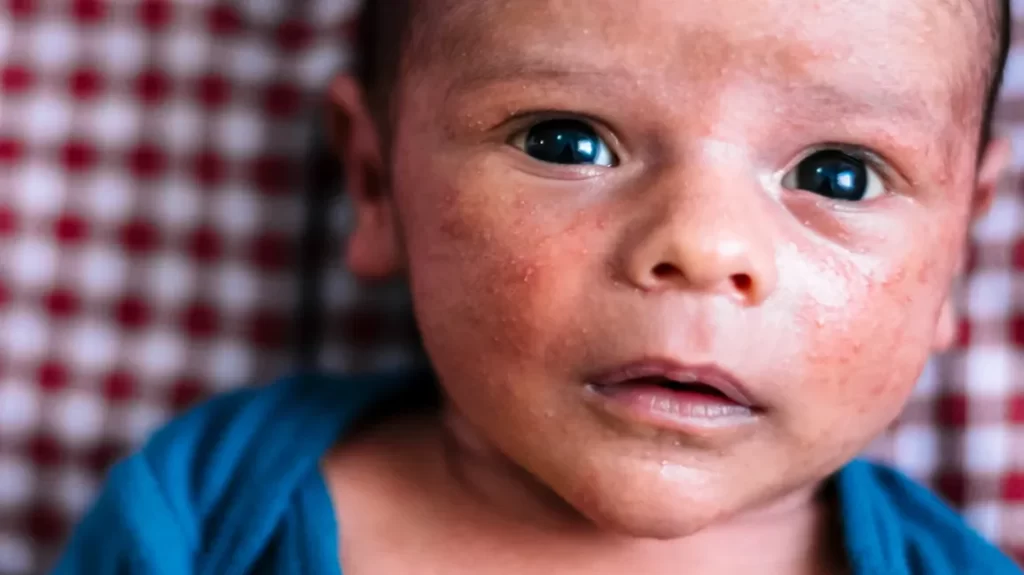
Babies are more prone to developing heat rash due to several reasons related to their delicate skin and the way their bodies regulate temperature.
Here are the key factors:
Immature Sweat Ducts
- Babies have immature sweat ducts, which means their sweat glands are not fully developed.
- This makes it difficult for their bodies to effectively regulate temperature, leading to sweat becoming trapped under the skin and causing heat rash.
Higher Body Temperature
- Babies have a higher body temperature compared to adults.
- Their bodies generate more heat, and their skin is more sensitive to hot weather.
- This combination increases the chances of heat rash occurring.
Inability to Communicate Discomfort
- Babies cannot communicate their discomfort easily, which means parents may not realize their baby is overheating until a heat rash appears.
- Constant exposure to heat without immediate relief can exacerbate the risk of heat rash.
Sensitive and Delicate Skin
- A baby’s skin is more sensitive and fragile compared to adults.
- The sweat and heat can cause irritation and inflammation, leading to the development of heat rash.
It’s important for parents to take preventive measures to keep their baby comfortable and prevent heat rash. By dressing them in breathable clothing, keeping them in cool environments, and monitoring their body temperature, parents can reduce the risk of heat rash in babies.
The Final Note: How To Treat Heat Rash In Babies
Understanding how to treat heat rash in babies is essential for parents to alleviate their little one’s discomfort. Heat rash, also known as prickly heat, occurs when sweat ducts become blocked, causing small red bumps or blisters on the skin.
To provide relief for babies experiencing heat rash, cooling baths and the application of water can be helpful. Additionally, using steroid creams, calamine lotion, or anhydrous lanolin can soothe the affected area. Prevention is key, so parents should dress their babies in light, breathable clothing and keep them hydrated.
In most cases, heat rash resolves on its own, but if it persists or worsens, seeking medical advice is recommended. By following these tips and remedies, parents can ensure their baby stays comfortable and rash-free during hot weather.

